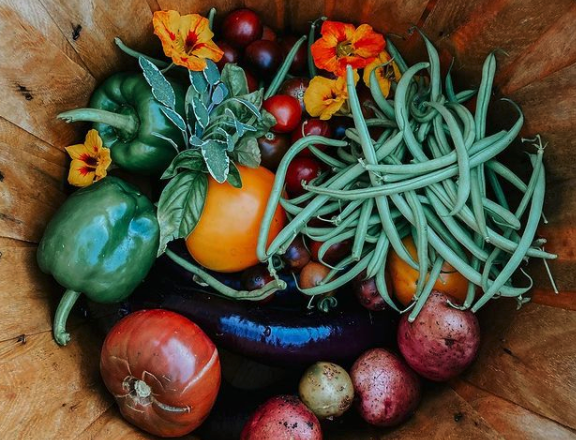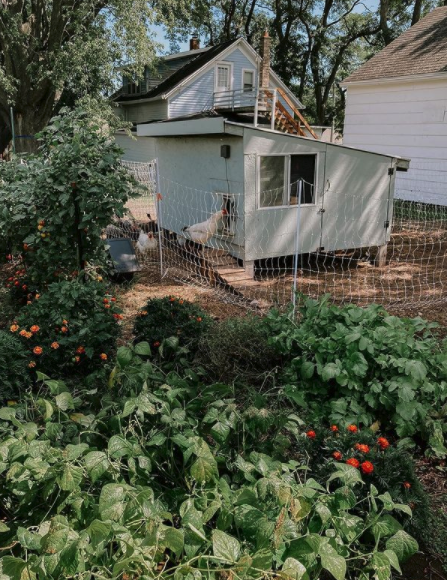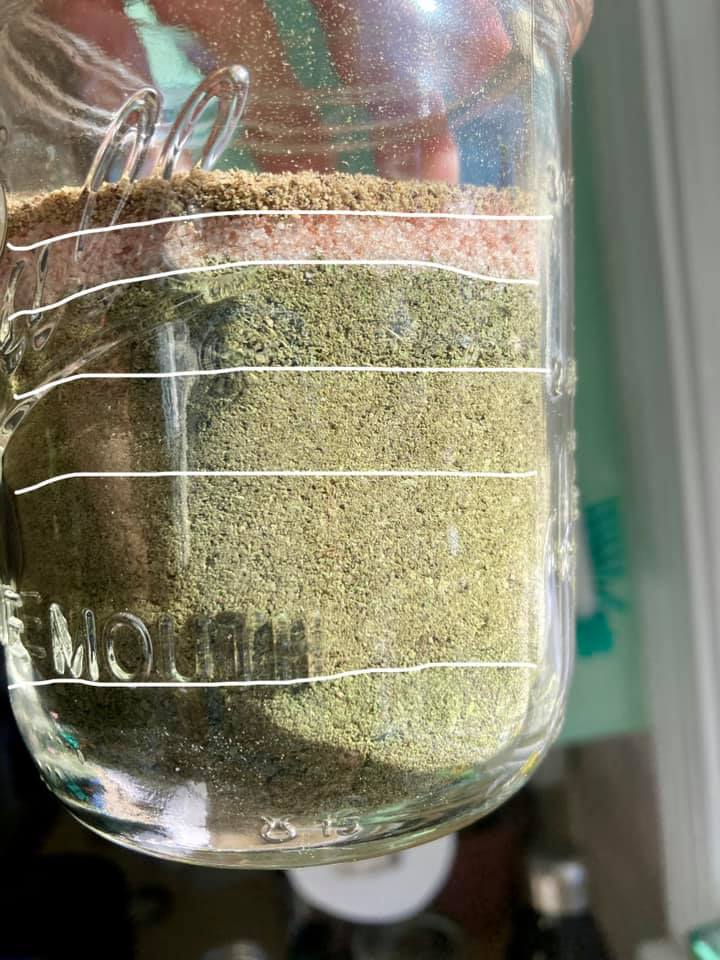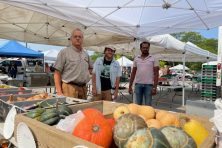Fall Harvesting and Preserving
- Share
- Tweet
- Pin
- Share

Growing and foraging tips for the aspiring homesteader
This time of year, my Facebook and Instagram feeds are flooded with pictures of brightly colored glass jars filled with jams, salsas and other varieties of canned fruits and veggies. I’ve always marveled at the people who, in addition to leading busy lives, find time to not only plant and tend to a garden, but also preserve the food it produces to be enjoyed when said garden feels like a distant memory.
Although I’ve long had a garden and enjoyed fresh vegetables from it throughout the summer, it’s about this time of year when the end-of-the-season harvest fills the kitchen counters. And, though armed with good intentions, the canning supplies never seem to make their way down from the top kitchen cabinet. How do these people do it?
For Soirsce Moriarty, foraging, growing and preserving the food she grows are part of how she was raised, and now they are activities she wants to pass on to her own family.
“I grew up on a homestead,” she said. “We had chickens, rabbits, goats, horses and a huge garden. Now I have my own three kids, and I wanted this lifestyle for them.”
Moriarty grows what she calls a “family-size” garden, which supplies most of the family’s fresh produce from May through October. The family also keeps a few chickens that are used for both meat and eggs, and it supplements its food stores through foraging.
“This time of year, I’m looking for wild apples to make vinegar and lion’s mane mushrooms, which has no lookalikes, so it’s good for beginners,” Moriarty said.
Beyond providing the family with a significant percentage of its food, the combination of gardening, homesteading and foraging also provides the family with ample outdoor and educational opportunities. In Moriarty’s situation, she incorporates the lessons from the forest, field and garden into her children’s homeschooling. Foraging also gave her an education in sustainability issues and the need to protect the land used for foraging.

“If you don’t have access to private lands, there are very important restrictions to be aware of that apply to public lands that are set for good reasons,” she said. “I’ve come across an unfortunate amount of wanton destruction, and it’s been really disheartening.”
As much as Moriarty enjoys foraging, she said the issues surrounding sustainability are why she’s taken up gardening and homesteading. In the process, she’s also showing others that neither requires a lot of space: She does everything on less than an acre in Sturgeon Bay.
What you can’t produce yourself – either because of space or time – can be sourced from other homesteaders, local farms and orchards, or Community Supported Agriculture (CSA) programs. That’s what Gibraltar resident Angela Sherman does.
“I have a good-sized garden and a small orchard in our yard,” she said. But most of the bulk produce she’s unable to grow herself comes from a CSA subscription through Healthy Ridge Farm.
In addition to canning the usual jams, jellies, tomato paste, fruit sauces and pickles, Sherman also cans pumpkin, squash, soup stock and even the ingredients for homemade dog food. A food dehydrator helps her to preserve a variety of herbs and fruits, and to make her own seasoning mixes.
She also blanches and freezes a wide variety of veggies, in addition to the potatoes and onions that are stored in the refrigerator.

For meat, Sherman purchases half a cow from her uncle and has found other local farmers to source whole chickens and pigs to fill the rest of the freezer. And, on occasion, she’s been known to butcher her own roosters for chicken stock and soup.
“Farming has always been a part of my life,” she said. “I wanted to give those same memories and connections to food to my children.”
There are secondary lessons that her family is learning through gardening and homesteading as well.
“It has also taught my family about good skin protection,” she said, referring to the large amount of outdoor time these activities involve. It’s a lesson that carries over to other family outings like hiking and going to the beach.
“Gardening and foraging also teach how to differentiate between ‘good’ plants and ‘bad’ plants,” Sherman said. Conversations about the soil benefits of dandelions, the food source that flowers provide for pollinators, the fact that some plants are medicinal, and what makes a species “invasive” are common occurrences in her home.

Tips for Beginners
What’s the trick to being able to reap all the benefits that come from home gardening, foraging and food preservation? Moriarty and Sherman shared a few tips that got them started and continue to keep them going.
First on Moriarty’s list: Grow only what you like to eat.
“If you don’t like it, you won’t use it,” said Moriarty, whose personal favorites include tomatoes, potatoes, basil, dill, beans, golden beets and carrots.
Keeping things as low maintenance as possible also helps. For her, that means using mulch to suppress weeds, planting low-maintenance vegetables and making garden chores part of her daily routine.
“I don’t have much time for weeding – who does? – so I try to start and end my day in the garden,” Moriarty said. “Even just a few minutes [of weeding] daily will help keep it under control.”
Favorite low-maintenance produce options include potatoes, radishes, bush beans and snap peas.
Sherman tells aspiring homesteaders to start small.

“I began my garden growing a small bed of potatoes next to my house,” she said, adding a few new items each season.
She took the same approach to canning.
“The first year I did jam, pickles, cherries and applesauce. Each year I try to add one or two more items,” she said.
Although Sherman no longer works full time, she remembers balancing work and homesteading by doing things slowly – sometimes over the course of a week – versus tackling it all during a weekend.“However, the more often you garden or preserve, the better and faster you’ll get at it,” she said.
Armed with inspiration and some practical tips, that mountain of heirloom tomatoes waiting for me on the kitchen counter suddenly doesn’t feel so intimidating. The canning pot and Mason jars make their way out of the cabinet. And the vines heavy with wild grapes that I noticed while hiking the property the other evening? They just might find their way into a can of jelly this season after all.


